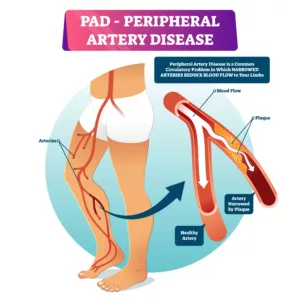What is Peripheral Arterial Disease (PAD)
LJVascular2022-04-28T18:54:59-07:00Peripheral artery disease is a subset of vascular disease,also referred to as peripheral arterial disease (PAD), which develops when excessive plaque buildup on the artery walls causing the narrowing of the arteries.

The arteries deliver oxygen-rich blood from […]




